Kitchen Compost Material, how to manage it?
John 9a
3 months ago
last modified: 3 months ago
Featured Answer
Sort by:Oldest
Comments (27)
John 9a
3 months agoRelated Discussions
How do you handle kitchen compost?
Comments (23)I use a garbage can with lid and line it with double brown paper bags. And usually put some used paper towels in the bottom before adding kitchen refuse so as to soak up moisture. I add more paper towels as they get used and in about 5 days or so, lift out the paper bags and carry the whole thing out to the compost pile. It's amazing to me that after 15 years or so of using this method, there is never more than a half dozen paper bags visible on top of the heap. The pile is built on a slope inside a cage of pallets and wire so the compost can be scooped out of the downhill side every spring. No turning, fancy components or whatever. When the pallets rot out, they are replaced. I suppose I could build two piles and turn one while the other is being built up but that sounds like work. Incidentally, I have another garbage can for recyclables (plastic, glass and cans), another for paper waste and another for real garbage that can't be recycled in any way. And a bag for returnables for deposits. With five containers, visitors never know where to put anything....See Morehow to manage leaves for mulching
Comments (6)A rotary mower with a bag attachment, to catch the leaves as the mower throughs them, is one way. I have made a frame of 2 x 4's, stapled screen material to it and blown the leaves from that mower into that. Once shredded those leaves can be plunked down on the soil whereever you want them. Even in a layer 3 or 4 inches thick the Soil Food Web will digest tehm, even if you do not add manure or any other Nitrogen source. In my planitng beds the leaves from last fall, shredded and spread, will not last much longer then about the middle of August. The soil bacteria will have digested them by then....See MoreHow to manage composting kitchen scraps in the winter.
Comments (22)I believe the easiest way to get compost to the bin is via 4 children, but I understand there are drawbacks that come with that particular solution. ;-) We generate an enormous amount of compost. Husband loves cooking. He loves buying vegetables more than he loves to cook them, unfortunately. He is more of a meat guy, but based on his shopping I believe he wishes he ate more vegetables. Between the food we do eat and the food that goes bad before we eat it, it's a pile. Our compost pile has been overflowing for a long time, despite being able to use much of the good product this summer. This fall I bought two of these geobins for composting, and so far am happy. I would think they would make a good temporary bin to keep closer by in winter if somebody didn't want to use a plastic garbage bin. I bought them because I truly didn't have time to build anything myself, and by the time I bought supplies I figured I wouldn't be too far off the $32 cost for the geobin. It is easily adjusted from a small to large radius so I didn't have to think about sizing. Geobin composter I used to "do" composting better. Kept it wet, turned, and hot/warm, etc. Our chickens we used to have were a huge help. Now I don't have the time. I'm into cold composting, which is a nicer way to say "dump it and leave it."...See MoreAre these items compostable. How to compost them
Comments (10)It it was ALIVE, and is now DEAD (or harvested/excreted) it CAN be composted. Period. How depends on the method being used. Hot aerobic, cold aerobic, or anaerobic. If aerobic, also depends on how often the material is turned/screened (re-aerated) and percentage of water and how well the pile is insulated. Bones and shells take longer than plant tissue and flesh. Fiberous material takes longer than less-fiberous. Small pieces compost faster than large pieces (a matter of surface area in contact with microbes). I recommend using a blender on kitchen & table scraps with a bit of water as a matter of convenience. Hatchet, machete, shovel and shredding machine are all of value to a serious composter. How fast also depends mainly on the C:N ratio remaining in the material (temperature), pH and moisture content. Test - don't guess. And also the microbe diversity in the material and whether small 'decomposers' (such as insects) are at work in the material yet. I do not recommend putting any raw items into a pile that you are attempting to finish for use (1 month before using the compost, is generally safe via aerobic method) - BUT recommend 1/2" x 1/2" sifting before use (returning all non-graded material back into a pile). Particularly using the material for raising vegetable root crops. SoilGuy...See MoreJohn 9a
3 months agolast modified: 3 months agoJohn 9a
3 months agoJohn 9a
3 months ago2rickies
3 months agoIsaac
3 months agoJohn 9a
3 months agoCaroline Donnelly
3 months agolast modified: 3 months agoShadyWillowFarm
3 months agobeesneeds
3 months agorebasheba
3 months agoklem1
3 months agoJennifer Grucza
3 months ago
Related Stories
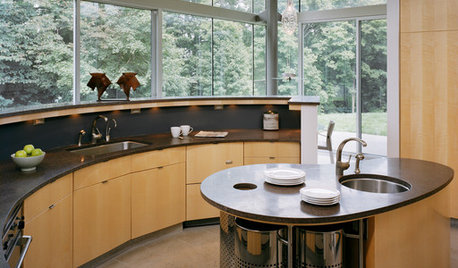
GREEN BUILDINGWhere to Hide the Kitchen Compost Bin
Enriching your soil doesn’t have to mean staring at a countertop pile of decomposing food scraps
Full Story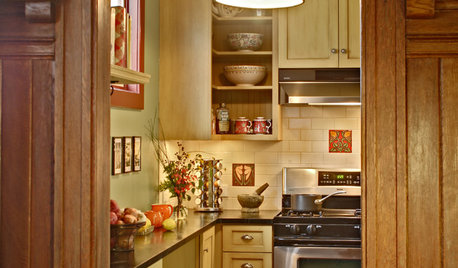
BEFORE AND AFTERSKitchen of the Week: Bungalow Kitchen’s Historic Charm Preserved
A new design adds function and modern conveniences and fits right in with the home’s period style
Full Story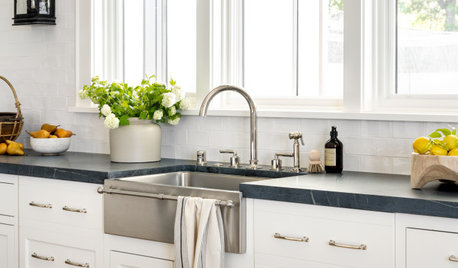
KITCHEN DESIGN8 Kitchen Sink Materials to Consider
Learn the pros and cons of these common choices for kitchen sinks
Full Story
MOST POPULAR6 Kitchen Flooring Materials to Boost Your Cooking Comfort
Give your joints a break while you're standing at the stove, with these resilient and beautiful materials for kitchen floors
Full Story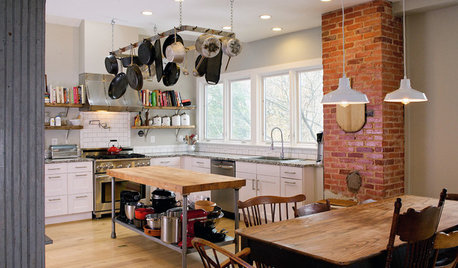
KITCHEN DESIGNNew This Week: 4 Kitchens That Embrace Openness and Raw Materials
Exposed shelves, open floor plans and simple materials make these kitchens light and airy
Full Story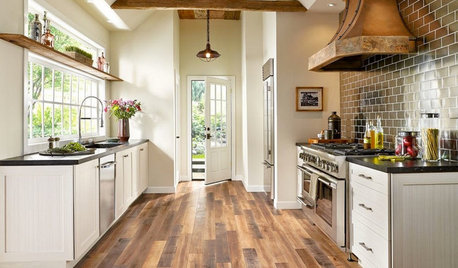
MOST POPULARPros and Cons of 5 Popular Kitchen Flooring Materials
Which kitchen flooring is right for you? An expert gives us the rundown
Full Story
MOST POPULARYour Guide to 15 Popular Kitchen Countertop Materials
Get details and costs on top counter materials to help you narrow down the choices for your kitchen
Full Story
KITCHEN DESIGNMix and Match Kitchen Materials for a Knockout Design
Give your kitchen unexpected flavor by combining wood, stone, glass and more. Here’s how to get the mix right
Full Story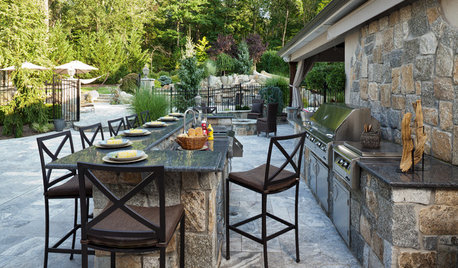
OUTDOOR KITCHENSYour Guide to the Top Outdoor Kitchen Countertop Materials
Houzz pros share the best options for different climates, budgets and styles — and one to avoid
Full Story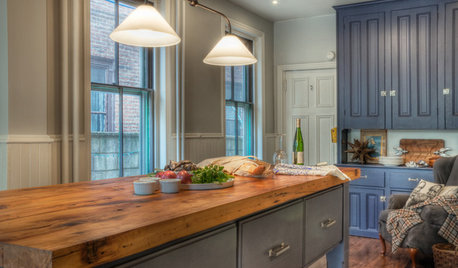
KITCHEN DESIGNEco-Friendly Materials: Kitchen Countertops
Going green in the kitchen opens the door to unusual countertop materials that are beautiful, durable and kind to the planet
Full StoryMore Discussions



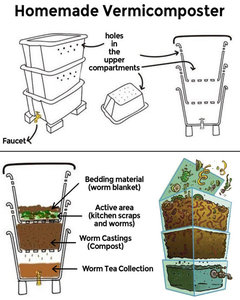
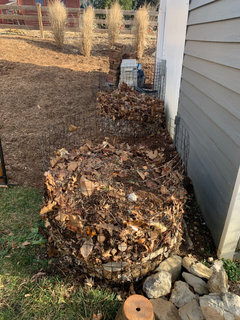
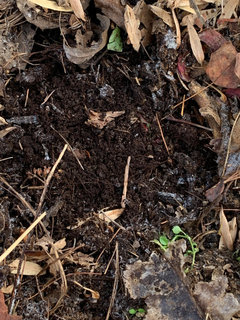
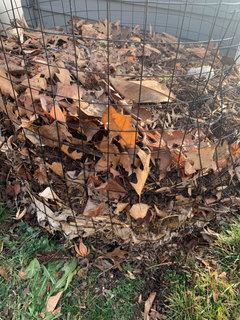
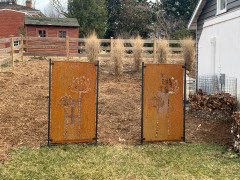
Jenny